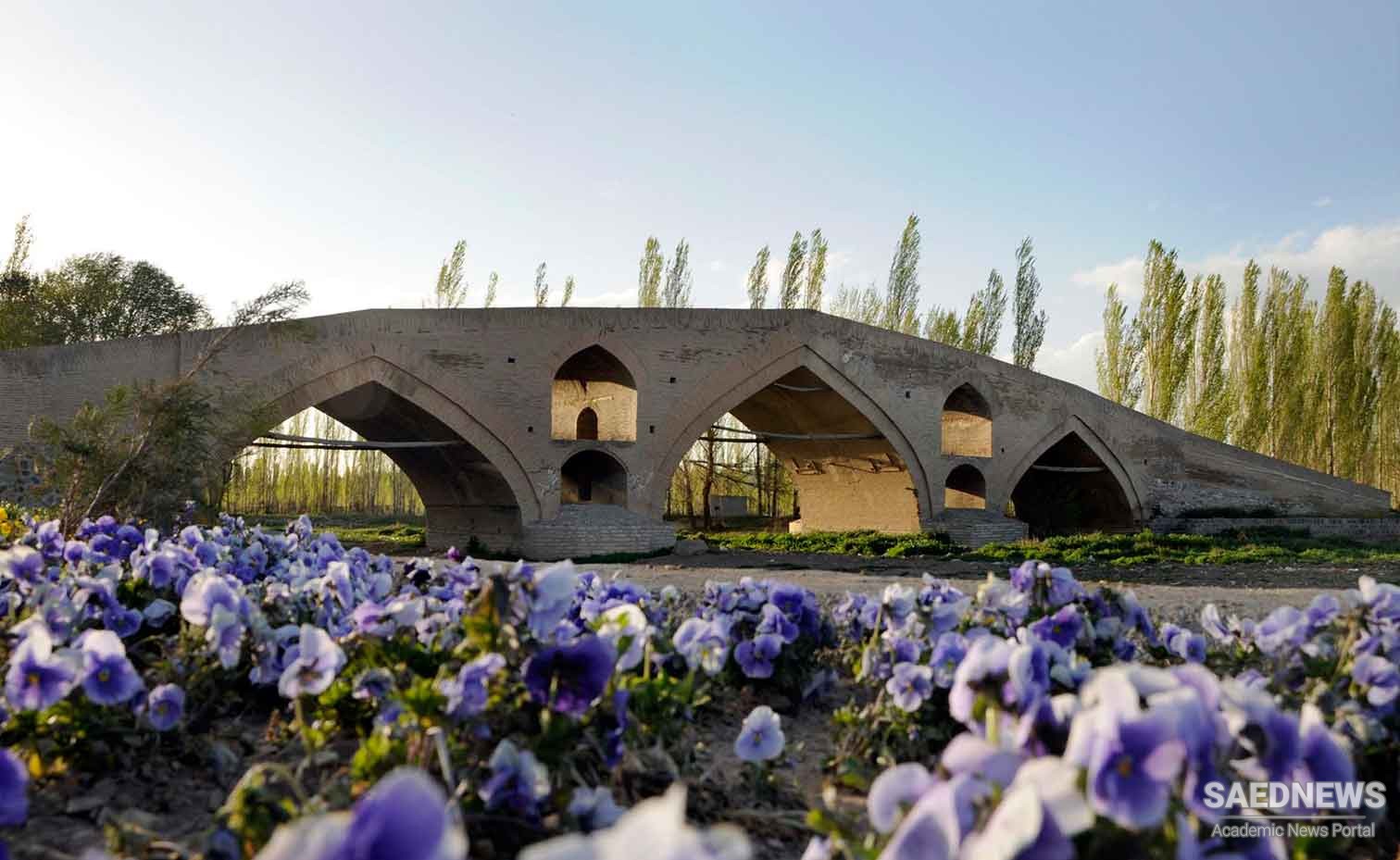This bridge was built by the command of Mirza Baha_Al-Din Zanjani, one of the reputed merchants of Khamseh district. The construction dates back to 1903, the reign of Naser-Al-Din Shah Qajar. It’s worth mentioning that there are more buildings such as Haj Taqi Mosque and Mirley Public Bath which are constructed by the command of Mirza Baha-Al_Din. He also helped people of Zanjan during a drought.
The bridge is made of stone, 100 meters in length. The height of the structure in the climax reaches to 11 meters. It also has three arch spans with rip vault technique. The central arch span is bigger than the others with 14 meters in width and 8.5 meters in height. Each of the collateral arch spans is 12 meters in width and 7 meters in height.
Inside the interior facing of the biggest arch span, there is a calligraphic inscription in Bannai Script containing the date of construction. To bear the weight of structure arch spans are designed wide.
In order to prevent the impacts of humidity on the bridge, the foundation is covered by limestone and lime mortar. The stoned surface is up to 1.5 meters above the water level.
To visit the bridge, it’s better to visit the Zarin Rud Park to enjoy a walk and a landscape with an old bridge.
The bridge was the main corridor on the Qizil Ouzan River in Qajar era, it was the main passage between Zanjan and Kurdistan provinces. Qizil Uzan is one of the longest rivers of Iran originating from the Chehel Cheshmeh Mountains in Kurdistan and after joining Shahrud River and Zanjanrud River makes The Great Sefidrud River and ends in the Caspian Sea. The Bridge was built on it to make ease of transportation to western Iran, so it was a strategic corridor during the Qajar era.


 Mirza Kuchak Khan's Historical House, Rasht, Guilan Province
Mirza Kuchak Khan's Historical House, Rasht, Guilan Province














































